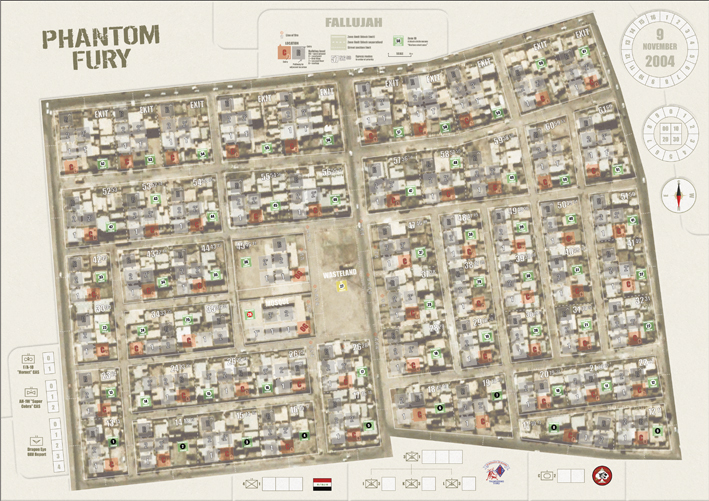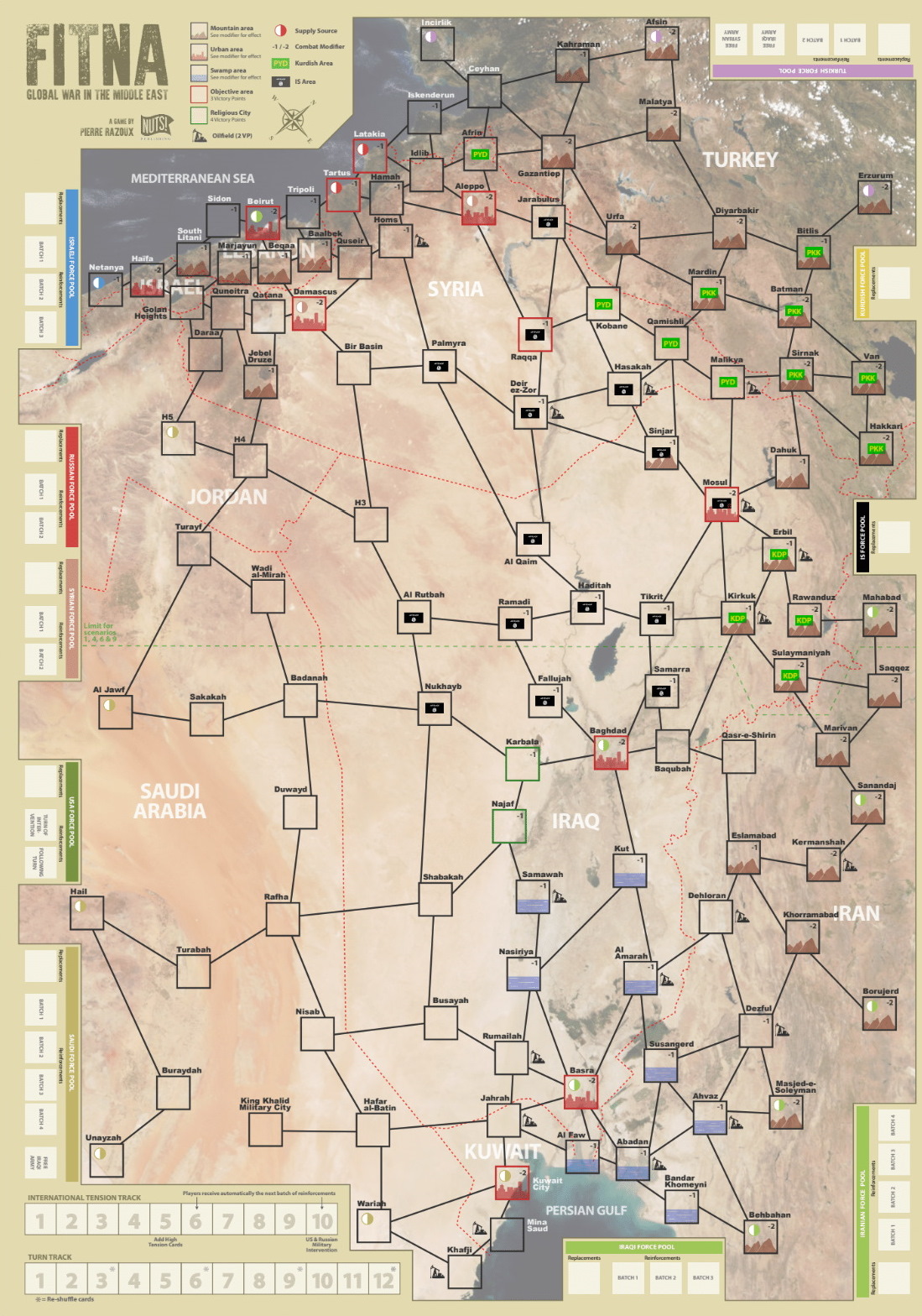This article originally appeared on VICE France.
You may well be a pacifist – a staunch objector to any and all conflict, so opposed to warfare that you’d leave the room if someone suggested firing up some Call of Duty – but if you’ve ever played the board game Risk, I’m afraid to tell you you’re living a lie.
Videos by VICE
That’s because Risk isn’t just a board game – it’s part of a long tradition of wargames: strategic games which simplify and gamify real warfare tactics.
Antoine Bourguilleau, historian and researcher at the Institute of War and Peace Studies at the Sorbonne University in Paris, wrote a book about wargaming, a strategy that has been used to simulate conflict and train militaries for centuries.
Wargames can last for weeks, with extremely complex boards and 60-page rulebooks. To this day, soldiers and diplomats around the world use them to better understand contemporary conflicts, from Syria to the Sahel. I called up Antoine Bourguilleau to find out how board games became a strategic weapon for armies.

VICE: What are wargames?
Antoine Bourguilleau: A wargame is a tool that allows you to understand conflict and prepare yourself mentally. It’s pretty handy – it doesn’t kill people and doesn’t cost much, which is important for armies.
Why did the military start using them?
At the end of the 18th century, the Prussian military realised something paradoxical: all soldiers were prepared for war, except the senior officers who were supposed to lead them. Infantrymen were taught to use their rifles and to change formations. Same goes for the cavalry or artillery. But senior officers only had a very theoretical training in warfare. In the military schools opened around that time, officers studied treaties, battles and campaigns. But they only occasionally went out into the field to watch simulations of big manoeuvres and imagine what would actually happen. It was very costly.

Where did the idea come from?
At the time it was called Kriegsspiel – literally “wargame” in German – since it was developed in Prussia. The first rule writers based it on chess. But instead of chess’ flat terrain, some boxes represented villages or forests, which could be used as cover or block the army’s view. The towers, the bishops and the other pieces become the infantry, the cavalry, the artillery.
Eventually, they started using military operation maps. A pawn represented a battalion, which was moved around the maps. The game’s rules often prevented you from knowing what was going on on the other side. Once the Prussian military was introduced to the Kriegsspiel, it started being incorporated into trainings and could be found at every outpost.

The Prussian army was very successful. Was it thanks to the Kriegsspiel?
The Prussians were the first to adopt it, so people ask: “Isn’t there a cause and effect here?” I’m more careful. But it is true that the Prussian army had an excellent grasp of operational matters and a strategic vision far superior to their adversaries. What is certain is that these victories led many armies to take an interest in the Kriegsspiel.
Prussia aside, what victories can we attribute to the adoption of wargames?
This is not a battle, but the Pacific campaign, led by the United States during World War II against the Japanese. The Naval War College, which trains officers in the US Navy, incorporated wargaming into its courses from the 19th century. Between 1918 and 1941, they organised more than 200 wargames – some of which lasted weeks.
Most of them were about potential naval conflicts with Japan. For example, they realised the war was going to be very long and the Japanese were likely to spread across the Pacific islands. They also understood that the Japanese would need to hop from island to island to get back to Japan. And they did.

Have operations based on wargames ever failed?
That was the case for the Vietnam War. It was the early days of computing, and some American strategists took a quantitative approach to war, which led them to the conclusion that the northern Vietnamese were no match for them. But war isn’t all about numbers.
One of the greatest military thinkers, Prussian general Clausewitz, said the closest human activity to war is playing cards. They both have an element of the unknown. In war, there is a plan and things that could cause it to fail. Issues with commands, sick soldiers, something not indicated on the maps, late supplies. Wargames can’t predict the future, but they do allow you to prepare for many possibilities.

When did military wargames transition into civil wargames, and then recreational activities?
The civil wargame tradition dates back to the beginning of the 20th century, with H.G. Wells, the author of The War of the Worlds. In 1913, he published Little Wars [a book describing the rules of a game played with toy soldiers]. This was the beginning of recreational wargames that were not intended for the military. The idea here was to fight fictional battles or recreate historical battles.
At the end of the 1930s, wargames became a social activity, especially in New York’s high society. But what was amazing was the real exchange between civilian and military wargames. In the 1950s, many American game designers were approached by the US Department of Defense to produce games for the military. That still happens today. For example, there is a game called Phantom Fury, about the second battle of Fallujah in 2004, which was created by Laurent Closier, who works at the French Ministry of the Armed Forces.

Is it possible to reproduce conflicts as complex as the ones we know today?
It is true that it was easier to simulate classic conflicts where two fronts clash. There were the good guys and the bad guys, they hit each other and whoever had the most marbles won. But in the early-90s, we realised that things didn’t work like that anymore, especially after the dissolution of Yugoslavia. NATO, which has used wargames for a long time, found that they didn’t have the necessary software to understand these kinds of conflicts. They decided to use “Matrix Games”, which allow for many players.
How do Matrix Games work?
The idea is to take into account military data, but also politics, the economy, diplomacy and the press. The problem is, these things are often not quantifiable. The rules are usually quite simple: each player announces what they want to do, and three reasons for their action. Then, they roll two dice. If their reasons are considered valid by the other players, they can add +3 to the score obtained on the dice (+1, or +2, with one or two credible reasons). With seven or more points, the action is authorised.

How does this help in real life?
The point of wargaming is that it allows you to bypass a moral mindset. In the game, the question is not: “Is this good?” It is about evaluating the interests, objectives and resources of the stakeholders.







